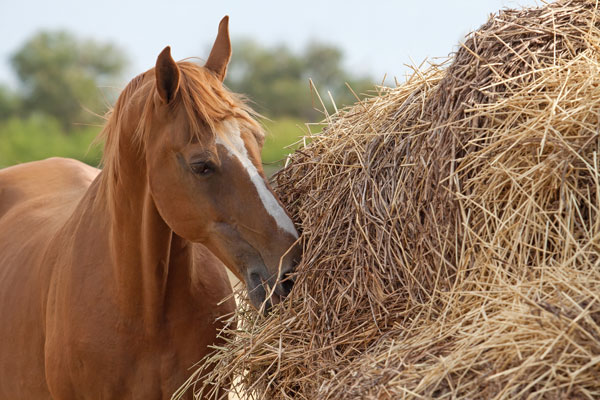
An accurate diagnosis is the foundation for effective treatment of any equine health issue and especially so for allergic conditions that impact equine respiratory function, such as identifying equine asthma allergens. Haygain’s long-standing commitment to research has recently resulted in significant progress toward identifying which of various allergens trigger inflammatory responses and other allergy symptoms in the horse.
It’s common knowledge that allergens found in fungi, bacteria and arthropods (mites, etc.) cause this condition by triggering the body’s inflammatory responses.
Which Allergen or Allergens?
Samuel White, PhD candidate, MSc, BSc, and his co-researchers utilized the latest developments in computing power and robotic technology to produce a microarray, a microchip-based testing platform that enabled evaluation of almost 400 potential allergens at a single time. This was the largest scale allergen assessment in severe equine asthma in horses to date. The results established a wide range of previously unidentified allergens and highlighted fungi and mites as the main reactants.
This initial study established a sound platform for future diagnostics by providing a reliable, fast and repeatable method for screening of potential allergens. Crucially, it enables targeted allergen-avoidance regimes, which are the cornerstone to treatment.
Know Your Equine Asthma Allergens
White, the lead researcher, is an equine science faculty member at Nottingham Trent University in Nottingham, England. An applied immunologist, he specializes in equine asthma and allergies, focusing on the identification of biomarkers, protein allerginicity and the development of novel diagnostic techniques.
The study was accepted and published by The Journal of Veterinary Internal Medicine in July of 2019. “The last four years of my PhD have been both challenging and exciting in equal measures!” says White. “The funding provided by Haygain has enabled significant scientific advances in both the understanding and future diagnosis of severe equine asthma. It is very rewarding to see our initial development of this technique published in one of the highest-ranked veterinary journals globally. I look forward to publishing further aspects of this project in due course.”
White’s research supervisor, Professor Meriel Moore Colyer, is equally excited about the findings. “This research has produced a highly specific and accurate method by which to identify severe equine asthma allergens in horses and is definitely the way forward for better diagnosis and accurate treatment,” says Colyer. “The high number of allergens tested and the international aspect of the samples collection means that these results are applicable worldwide.
“Being able to identify what an individual horse is allergic to will help owners choose management regimes and employ the most effective pre-feeding treatments to minimize the horse-allergen interaction and reduce the negative impact of this performance-limiting condition.”
Collaboration is Critical
Haygain’s technical director Becky James explains the horse health company’s motivation for funding equine research in general and this study in particular: “Collaboration in research is important when pushing boundaries and using innovative techniques such as the microarrays,” says James. “It’s exciting that so many specialists from around the world were involved: a collective group from the UK, France, Switzerland and the U.S.”
Along with advancing management and treatment protocols for all horses with or at risk of severe equine asthma, the study results confirm earlier research that fungi are a major cause of equine respiratory problems. In addition to dust, mold and bacteria, high-temperature hay steaming greatly reduces fungi in hay.
“We are proud to have supported this research project to better understand which allergens cause Recurrent Airway Obstruction,” James notes. The broader context of the investigation is the reality that over 80% of active sporthorses suffer some degree of airway disease, often without obvious symptoms. “It’s important to support general understanding of all degrees of equine asthma,” James concludes. “It’s all part of our effort to prevent or successfully treat this all-too-common condition.”
For more information on Haygain, and its high-temperature hay steaming process and products, visit www.haygain.com.
Read the full study, “Development of a comprehensive protein microarray for immunoglobulin E profiling in horses with severe asthma.”





